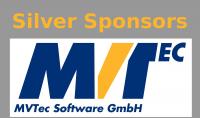Stefan Roth
Technical University Darmstadt
Random Field Models for Natural Image and Scene Statistics
Images, the basic input to any computer vision or biological vision system, span a vast space. As a simple example, there are about 101,000 different 8-bit gray-scale images of a size as small as 20 by 20 pixels. However, most of these images lack any "interesting" structure and are very unlikely to be encountered by an eye or a camera in the real world. Those that do, on the other hand, are loosely tagged as natural images. Though occupying only a tiny fraction of the image space, natural images stand out with particular statistical properties. Other dense scene representations, such as depth or motion, share similar characteristics.
Recently, we have witnessed a surge of interest in modeling the statistics of natural images and scenes with applications ranging from low-level (e.g., denoising, deblurring, stereo, optical flow), over mid-level (e.g., segmentation, color constancy) to high-level vision (e.g., recognition). Random field models have emerged as a powerful tool in this context. The goal of this tutorial is to introduce random fields and their applications to modeling natural image and scene statistics. After reviewing basic statistical properties of images, scene depth and motion, I will discuss a variety random field models, covering the range from early works to the current state of the art, from pairwise to high-order models, and from generative (MRF) to discriminative (CRF) approaches. Finally, inference and applications in various domains will be discussed as well.
Content (slides are available here)
- Introduction
- Motivation and application examples
- Image and dense scene representations
- Basic statistical properties
- Local statistical models
- Random field models of image and scene statistics
- Markov random fields (MRFs)
- Early random field models
- Learning and Inference
- Conditional random fields (CRFs)
- Survey of recent MRF and CRF models
- Applications
- Image restoration
- Image-based rendering
- Flow estimation
- Stereo
- Feature learning





